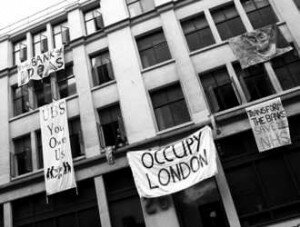 “I think the poorest he that is in England has a life to live as the greatest he…and I do think that the poorest man in England is not bound in a strict sense to the government that he has not put himself under.” These words of the republican Leveller, Colonel Thomas Rainsborough, addressing the Army Council on 28 October 1647 at St Mary’s Church in the Putney, still speak to us over three hundred years later.
“I think the poorest he that is in England has a life to live as the greatest he…and I do think that the poorest man in England is not bound in a strict sense to the government that he has not put himself under.” These words of the republican Leveller, Colonel Thomas Rainsborough, addressing the Army Council on 28 October 1647 at St Mary’s Church in the Putney, still speak to us over three hundred years later.
The struggle for democracy has continued ever since, by revolution and reform, with victories and defeats. Far from ending the struggle for democracy, capitalism has steadily generalised it across the world. As banks and corporations exploit their power, so people revolt and seek democratic solutions. International finance and people’s democracy stand as mortal foes.
The latest phase of the struggle for democracy has played out in the Middle East over the past year: First Tunisia, then Egypt, Libya, Yemen, Bahrain and Syria. Most recently, we can see signs of discontent and democratic dissidence in China and Russia. And starting in September 2011, the Occupy movement has risen to international prominence. Over ninety-five cities have seen larger occupations, including New York, Madrid, Tel Aviv, Tokyo, Sao Paulo, Paris and London.
Occupy is no mirror image of revolutions in the Middle East. It would simply be wrong to contrast the democratic revolutions of the Arab Spring with the economic demands of the Occupy movement. But while the slogan “We Are the 99 Percent” refers to the distribution of income, it also expresses fundamental democratic values. The past year has rightly been described as a “democratic awakening” in the West as well – not quite spring yet, but at least the end of hibernation. The central feature of our movement is the participatory democracy practiced in the general assemblies.
This takes us back to the historic and revolutionary, if largely forgotten, general assembly of the New Model Army in occupation at St Mary’s church, Putney. In 1647, the active section of England’s young people were armed and organised in the New Model Army. Each regiment elected its own ‘shop stewards’ known as the Agitators. As the first civil war ended, discontent with the English “Long Parliament” grew – and the members of the New Model Army decided to form their own form of representative body that was
to be comprised of the elected Agitators. With the so-called “Army Council”, the army became effectively
a people’s parliament inside the defeated Stuart monarchy.
This parliament – or general assembly – met to debate a new constitution. The republican Levellers proposed “An Agreement of the People” that stood in opposition to the proposals put forward by the ‘Grandees’ – landowning generals – such as Fairfax, Ireton and Cromwell, backed by the wealthy City bankers and merchants. History has shown the Levellers were right, but Cromwell
and the City had the might. Soon they used it to suppress the Levellers, and the Diggers, who in 1649 began to occupy land at St George’s Hill in Surrey.
Today, England has turned full circle. The young generation is not in a revolutionary new model army. But students and ‘redundant’ youth are rebelling in the streets. When the forces of the Crown barred the route to the Stock Exchange, we ended up camped outside St Paul’s. Now, like some Macbethean witches’ prediction, it is time for St Paul to meet St Mary.
By Steve Freeman
